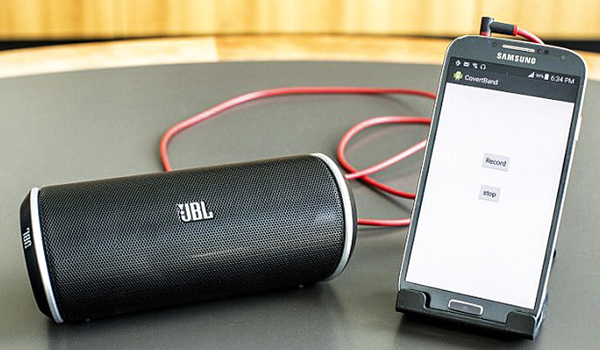Sonar surveillance
Leonardo da Vinci first used soundwaves to identify moving objects more than 500 years ago, but the technology could now facilitate crime when in the hands of criminals with smart devices. Police Professional reports.
With smartphones, tablets and other smart devices increasingly becoming part of everyday life, scientists have raised concerns that, if not properly secured, they could be used to steal data or invade the privacy of their users. Researchers at the University of Washington have demonstrated how it is possible to transform a smart device into a surveillance tool that can gather information about body position and movements of the user, as well as others in the immediate vicinity of the device. It involves remotely hijacking smart devices to play music embedded with repeating pulses that track a persons position, body movements and activities, both in the vicinity of the device as well as through walls. The system could be used to determine the number of occupants in a property or identify the activities they were involved in, but be virtually undetectable. To our knowledge, this is the first time anyone has demonstrated that it is possible to convert smart commodity devices like smartphones and smart TVs into active sonar systems using music, said senior report author Dr Shyam Gollakota, an associate professor of computer science and engineering. And the physical information CovertBand can gather, even through walls, is sufficiently detailed for an attacker to know what the user is doing, as well as other people nearby. CovertBand uses the principles of active sonar to gather information. Active sonar systems, such as on submarines, determine the position of objects by sending out an acoustic pulse. Those soundwaves bounce off objects in their path, and the deflected waves can be picked up by a receiver to determine the objects position, distance and shape. Through the speaker of a smartphone or other device, CovertBand sends out a repeating pulse of soundwaves in the 18 to 20kHz range. Much like sonar on a submarine, these soundwaves are reflected when they encounter objects in their path. The system uses the devices built-in microphones as a receiver to pick up these reflected soundwaves. The smart device then transmits this information to the attacker, who could be a few feet away or on the other side of the world. Most of todays smart devices, including smart TVs, Google Home, Amazon Echo and smartphones, come with built-in microphones and speaker systems, which lets us use them to play music, record video and audio tracks, have phone conversations or participate in videoconferencing, said co-lead author Rajalakshmi Nandakumar. But that also means that these devices have the basic components in place to make them vulnerable to attack in this manner. Other surveillance approaches require specialised hardware, from the classic hidden camera to an ultrasound-like device that must be placed on the wall of a neighbouring room, said Alex Takakuwa, the other co-lead author. CovertBand shows for the first time that through-barrier surveillance is possible using no hardware beyond what smart devices already have. The team tested CovertBands effectiveness using a smartphone connected to either a portable speaker or a standard flat-screen television. In both cases, the data could be used to decipher repetitive movements, such as arm-pumping, walking or pelvic tilts, to a range of up to six metres from the smartphone, with a positional error of only 8cm to 18cm. Researchers also discovered that, with the portable speaker, the audio pulses could be transmitted through thin, interior walls, although this did reduce the effective range. In its present form, the system can automatically identify and infer repetitive motions. More detailed inferences would require the manual analysis of the data. The 18 to 20kHz repeating pulses employed by CovertBand are on the low range of what many people can hear accurately, said Ms Nandakumar. But to increase the range of surveillance and work through walls, the authors increased the volume of these repeating pulses, which made them audible. To mask the sound, they covered CovertBands pulses by playing songs or other audio cl


